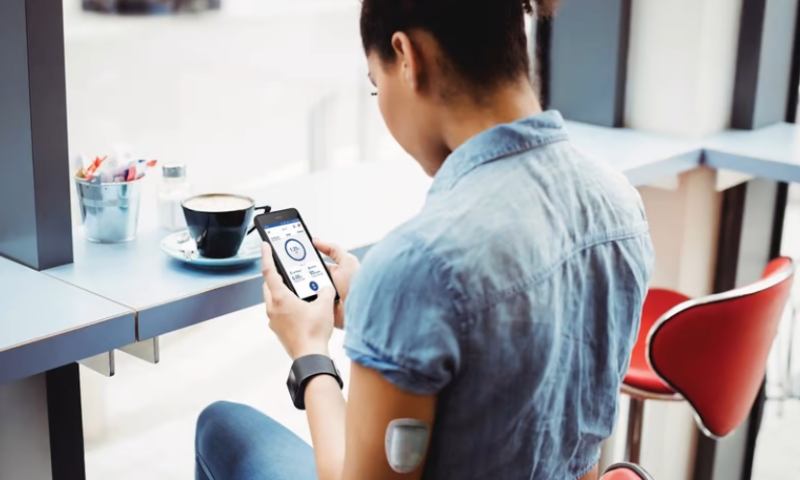2022 is the year of the Omnipod 5 for Insulet. The year kicked off with FDA clearance for the latest generation of the insulin pump—which is tubeless, fully wearable and can be completely controlled through an app on a user’s own smartphone—and the company has spent the ensuing months building out the system’s platform and making it available to more users than ever before.
“There’s so much that’s new with Omnipod 5 that we have a huge amount to do just to bring it to users,” explained Eric Benjamin, executive vice president of innovation, strategy and digital products at Insulet, in an interview with Fierce Medtech during the American Diabetes Association’s (ADA’s) annual scientific sessions Sunday.
That includes developing an iPhone-friendly app for the pump—which is currently only compatible with Android smartphones—and allowing it to be paired with Abbott’s FreeStyle Libre continuous glucose monitors, building on its existing integration with Dexcom’s own CGM systems.
In addition to making the Omnipod system compatible with more users’ existing devices, another key piece of Insulet’s mission to increase access to the system lies in its pricing strategy. Like the Omnipod Dash before it, the Omnipod 5 can be prescribed and picked up in pharmacies across the U.S.
“What that means is that folks with pharmacy benefits can typically get access to Omnipod for about the same cost as multiple daily injections, even though it delivers a dramatically better experience,” Benjamin said.
“It’s really affordable, and it’s pay-as-you-go, so folks can try out Omnipod—if it works for them, they keep using it, and if it doesn’t, they can try something else,” he continued. “That ability to trial and to help folks find out whether Omnipod is right for them at a really affordable cost through the pharmacy channel has been a huge part of our success over the last couple of years.”
Beyond expanding access to the FDA-cleared version of the system, Insulet is already adding to the platform. For example, Benjamin said, the company is working on developing new algorithms that would automate even more of the insulin delivery process.
“We’re really excited about what that future looks like—getting to the point where users are doing very, very little even on their personal smartphone, and the system’s doing the rest,” he said.
Insulet is also able to collect mountains of real-world data from its devices, which can in turn be used to improve and simplify how users and their caregivers and healthcare providers manage their diabetes.
“By virtue of having SIM cards in every controller that Insulet provides and by virtue of running on a mobile app, we get real-time data back into our cloud, which gives us the opportunity to do some really interesting things with providing insights and data via digital tools back to users,” Benjamin said, hinting, “We have some exciting things coming in building tools for all those stakeholders based on that data.”
The ramped-up rollout of Omnipod 5 comes as Insulet continues to share positive trial results for the device. An extension of a pivotal trial of the technology—the results of which were presented at the ADA conference on Friday—found that the significant improvements in glycemic control that young Omnipod users experienced during the trial’s initial three-month period stayed strong after a year of use.
The extended trial focused on children with Type 1 diabetes between the ages of 2 and 5.9 years old. After 12 months of use, their average HbA1c levels were at 6.9%—the same level recorded at the end of the trial’s first three months, down from a baseline of 7.4%. They also recorded an average time in range of 67.6% in the final months of the one-year period, well above the 57.2% at baseline and only a slight drop from the 68.1% they achieved during the three-month pivotal trial.
Another set of study results presented at the conference focused on adult Omnipod 5 users with Type 2 diabetes—a group that traditionally hasn’t used automated insulin delivery systems to manage their diabetes. After using the Omnipod system for eight weeks, about two dozen participants saw their A1C levels drop to an average of 8% from a starting point of 9.4%. After another 13 weeks of use, their average blood sugar levels had decreased further, down to 7.7%.
According to the study’s authors, those improvements prove that automated systems like Omnipod could indeed offer “a durable and clinically meaningful benefit for participants with previously sub-optimal glycemic control outcomes on injection insulin therapy.”

